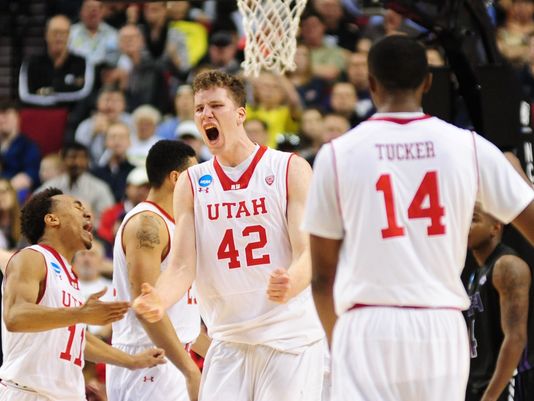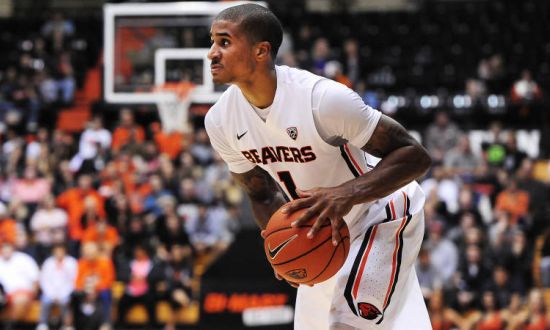Three Ways to Fill an All-Pac-12 Team
Posted by Andrew Murawa (@Amurawa) on March 8th, 2016Sometime earlier this year, we spelled out four different ways to create a Top 25 list or conference power rankings: (1) based on resume; (2) based on how teams are playing at that exact moment; (3) based on how you expect teams to be playing when it really matters; or (4) some improvisatory combination of the other three parts. Likewise, there are a bunch of different ways to put together all-conference teams. Below, we’ll give you three(-ish) different — and all entirely reasonable (says the guy who’s writing it) — ways to draw up an all-Pac-12 Team this season.
Note to the Pac-12 and other conferences that should know better: Basketball teams allow five players on the floor at a single time. Thus, all-conference teams should feature just five players. If you want to recognize additional players, that’s what Second Teams, Third Teams and Honorable Mentions are for.

Regardless Of How You Put Together An All-Conference Team, Jakob Poeltl Deserves A Spot (Godofredo Vasquez, USA Today)
Five Best Players
This one is simple. Don’t think too hard. Just go down the list and determine which players in the conference put together the five best seasons. Sure, determining “best” is completely subjective, but at least the concept is clear. Using this methodology in this year’s Pac-12, we would probably wind up with one true guard surrounded by three bigs and a swingman. Something like a team of Jakob Poeltl, Josh Scott, Ryan Anderson, Dillon Brooks and Gary Payton II. Maybe you would make an argument for Chris Boucher or Jaylen Brown over Brooks or Anderson. But either way, you wind up with a team that looks great on paper but probably would have some on-court problems — ask Purdue or Maryland about this — where they’ve got a lot of appealing pieces that do not fit together quite so well.
To take a little swerve off of this method of putting together a team, we can also move away from the players who had the “best seasons” in favor of just picking the five best players. In this scenario, California’s Brown likely moves up a notch. Judged on performance on the floor from November to early March, the freshman didn’t match what guys like Boucher, Brooks and Anderson did. But judged on performance heading into postseason play, it’s relatively easy to make the argument that Brown (or Allonzo Trier for that matter) deserves to be mentioned among the top five players in the conference.
Five Best Players Fitting Traditional Basketball Positions
Sometimes the expectation for these all-conference teams is to select five players in one of the following combinations: (1) the traditional two guard, two forward, one center make-up; (2) two guards, three forwards; or (3) three guards, two forwards. This isn’t a whole lot different than the previous option of picking the five best players but often that last spot is a difficult choice. The Pac-12 this season is jam-packed with a bunch of high quality frontcourt players and only one certain first-team guard (Payton). Using this methodology, we’re forced to either make the argument that Dillon Brooks is a guard (and he fits that role offensively), or we’re going to leave somebody like Ryan Anderson on the second team in order to shoehorn a player like Andrew Andrews on to the first team. Maybe this is the right way to do it. If I’m going to put an arbitrary restriction on an all-conference team that is never actually going to take the court together (i.e., limiting it to only five players), then maybe this equally arbitrary restriction on an imaginary team is also useful!
Putting Together the Five Best Players That Could Actually Work Together
There’s yet another way of doing this, even if nobody ever chooses this third method. And honestly, there’s probably no reason to do it. If the goal of this exercise is to recognize the best group of players in the conference, the above methodologies will do the trick. But for the purposes of writing something interesting, what if — instead of trying to force Andrews into a team featuring Poeltl and Scott vying for the same real estate inside — we built a team that could realistically function together in the modern game? Here it is:
- Jakob Poeltl, Soph, Utah. We’re going to start this team off by picking the best player in the conference and building a team around him. Spoiler alert: Poeltl is the clear-cut Pac-12 POY. Put him on the blocks and let him score in the post. Bring him up to the top of the key and get him involved in the pick-and-roll game. On the other end, have complete confidence in him protecting the rim, offering help-side defense, providing solid man-to-man post defense or disrupting pick-and-roll offense. In short, Poeltl is the obvious first pick around which to build a team in the Pac-12. Sure, the sophomore’s dominance in the lane means that we probably will wind up leaving a great player in Colorado’s Scott (who occupies the same type of role) off the team. But them’s the breaks.
- Chris Boucher, Sr, Oregon. The perfect pick to play the four alongside Poeltl is a guy like Boucher who prefers to float out to the perimeter and knock in threes at a respectable clip. Boucher also has the ability to drive by a guy off the bounce, cause trouble in the open court, and earn frequent trips to the free throw line. The best part of his game, though, is on the other end of the floor, where he’s among the best shot-blockers in the nation and has proven capable of working with a back-to-the-basket big to stop opponents’ post offense.
- Gary Payton II, Sr, Oregon State. We’ve got our two big-man spots filled, so it’s time to pick someone to run our squad. A year ago we would have been tempted to leave Payton aside here, or perhaps shift him over to the two-guard in favor of a better pass-first lead guard. This season, however, Payton has proven an ability to run the point guard position for a quality team. Not only is he the conference’s premier perimeter defender, but he averages better than five assists per game and dishes out dimes on more than a third of his teammates’ field goals (and commits turnovers on just 14 percent of his team’s possessions). Get distracted for a split second and he’ll also throw a nasty jam in your face.
- Gabe York, Sr, Arizona. With Payton’s keen ability to create off the bounce and find open shooters, we need a great multi-purpose shooter on this team. Guys like Jordan Mathews, George King, and Isaac Hamilton are all good options, but York provides dead-eye three-point shooting (42.9 percent on 205 attempts) as well as senior leadership, quality defense and secondary ball-handling capabilities. York’s quite clearly not the best player on his own team – and in this writer’s estimation, not even the best wing on his own team – but his skill set fits ideally with the group we’re building here.
- Jaylen Brown, Fr, California. This last spot is where it could all go wrong, and the choice serves as a testament to how difficult selecting to fill specific spots can be. Brown is undeniably a superior talent and a player worthy of consideration for an all-conference spot regardless of the methodology you use. But he’s also going to use a lot of possessions, take a bunch of shots and have the ball in his hands. If a coach could get him to buy into a role as a defensive stopper, a transition terror, a late-shot-clock-bail-out guy and a garbage-man supreme — think something like former Arizona forward Rondae Hollis-Jefferson at his best — Brown would be the perfect fifth-man on this team. If, however, Brown needs the rock in his hands 40 percent of the time and wants to be this squad’s leading scorer, he could also be its downfall. But, hey, we’re swinging for the seats here. If Brown sufficiently bought into his role on this squad, this group would give the Pac-12 the best chance of competing with the five best from any other league in college basketball.











































